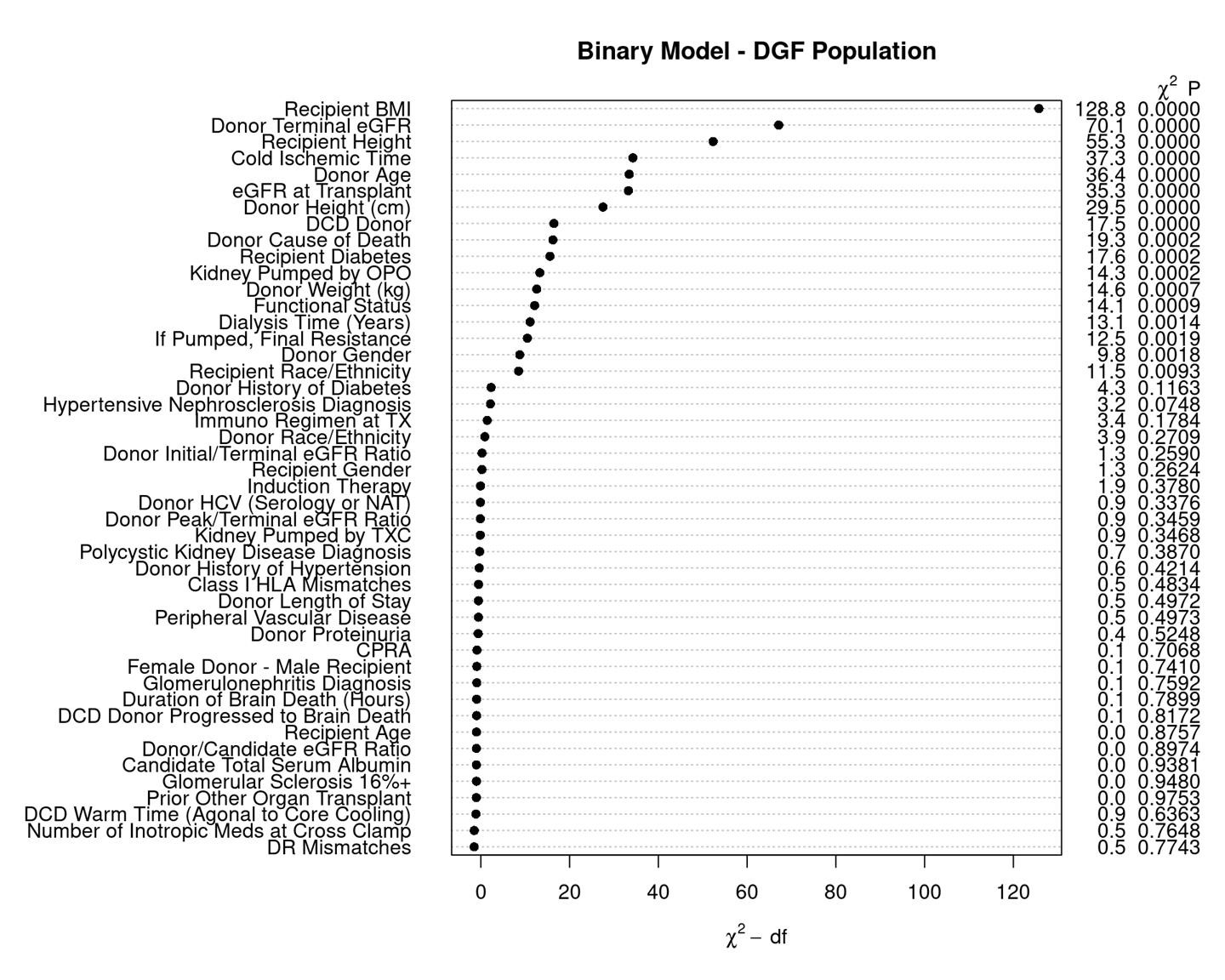Identifying Factors Associated with Delayed Graft Function Severity Using the OPTN Database
1Scripps Health, La Jolla, CA, 2United Network for Organ Sharing Research Department, Richmond, VA
Meeting: 2020 American Transplant Congress
Abstract number: A-298
Keywords: Graft function, Kidney, Outcome
Session Information
Session Name: Poster Session A: Biomarkers, Immune Assessment and Clinical Outcomes
Session Type: Poster Session
Date: Saturday, May 30, 2020
Session Time: 3:15pm-4:00pm
 Presentation Time: 3:30pm-4:00pm
Presentation Time: 3:30pm-4:00pm
Location: Virtual
*Purpose: Delayed graft function (DGF) is a costly adverse outcome in kidney transplantation with negative implications for both graft and patient survival. Identifying factors associated with DGF severity may improve the efficiency and enhance donor allocation in kidney transplantation. Using a novel stratification of eGFR at discharge to delineate DGF severity, we sought to determine donor and recipient factors associated with severe DGF.
*Methods: Utilizing the Organ Procurement and Transplantation Network dataset from 2015-2018, a two-tier definition for DGF severity (mild: eGFR≥15 at discharge; severe: eGFR<15 at discharge) was validated. Only adult, solitary, deceased donor kidney transplant recipients experiencing DGF (dialysis in 1st week post-transplant) were included. Exclusions included length of stay >21 days, graft failure prior to discharge, multi-organ transplants, living donor transplants, ABO incompatible transplants, and dual, en-bloc, and hemi-renal transplants. A logistic regression model was utilized to determine donor and recipient factors associated with mild vs. severe DGF. Selected factors were further refined using continuous variable modeling to ensure robust associations. Receiver operated curve (ROC) and calibration plot index-corrected C-Index were used to further assess the model’s validity.
*Results: Among a total of 12,845 DGF patients, 2,796 (22%) were designated as mild DGF and 10,049 (78%) as severe DGF. Amongst recipients, higher BMI was strongly associated with severe DGF followed by height and diabetes (χ2 p<0.0001-0.0002). Significant donor factors included terminal eGFR, cold ischemia and age (χ2 p<0.0001). The area under the ROC for the model was 0.71 and the bootstrapped resampling validation AUC was 0.70. Interestingly, recipient age, DCD warm ischemia time, immunosuppression/ induction regimen and kidney pumping by transplant center in contrast to pump use right after recovery by the OPO, which was predictive were not associated with DGF severity.
*Conclusions: Leveraging the OPTN database and a definition of severe DGF we validated factors previously associated with DGF but more importantly also identified unique factors associated with severity of DGF using our novel stratification approach. The adverse cost, graft and patient survival implications of severe DGF warrant additional investigation of these clinical factors to minimize specifically severe DGF to improve kidney transplantation outcomes. .
To cite this abstract in AMA style:
Checchi K, Stewart D, Toll A, Case J, Kurian S, Marsh C. Identifying Factors Associated with Delayed Graft Function Severity Using the OPTN Database [abstract]. Am J Transplant. 2020; 20 (suppl 3). https://atcmeetingabstracts.com/abstract/identifying-factors-associated-with-delayed-graft-function-severity-using-the-optn-database/. Accessed December 21, 2025.« Back to 2020 American Transplant Congress

